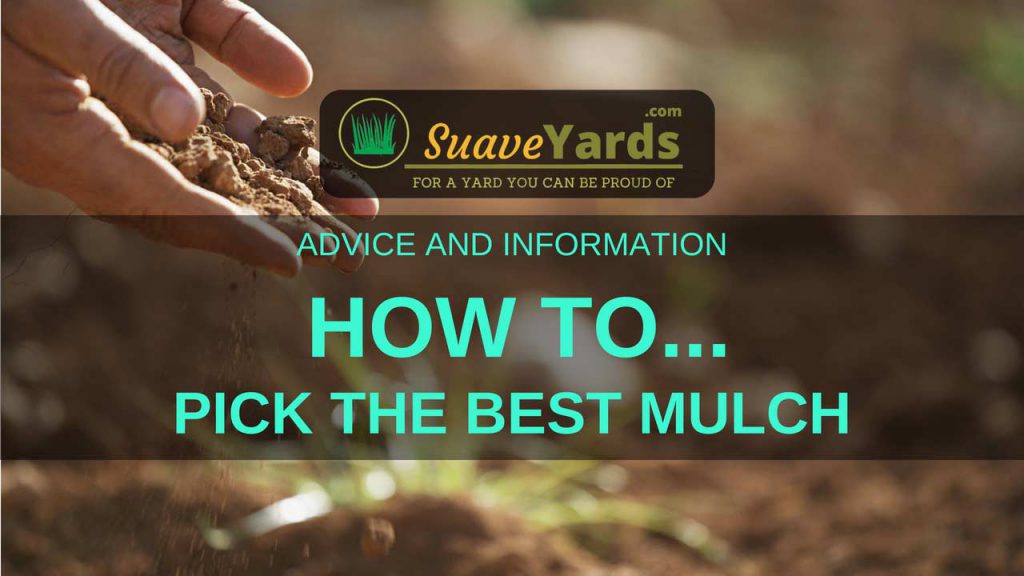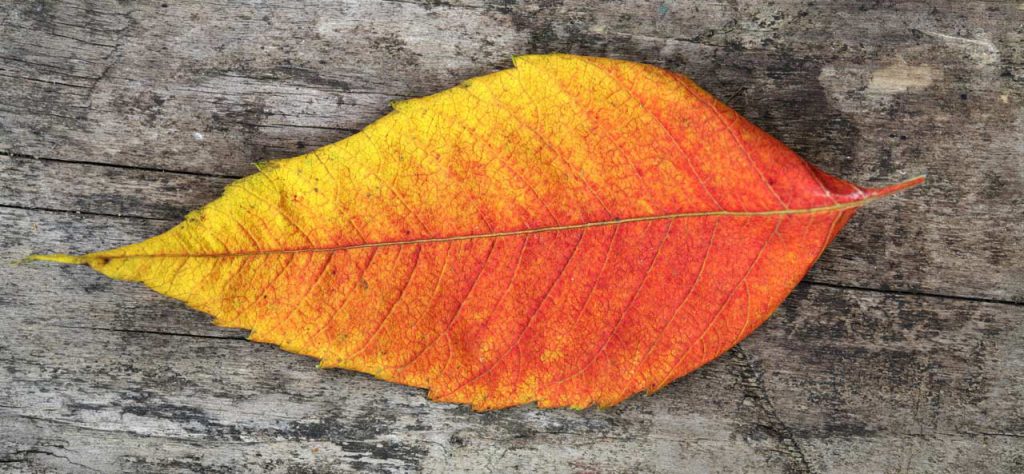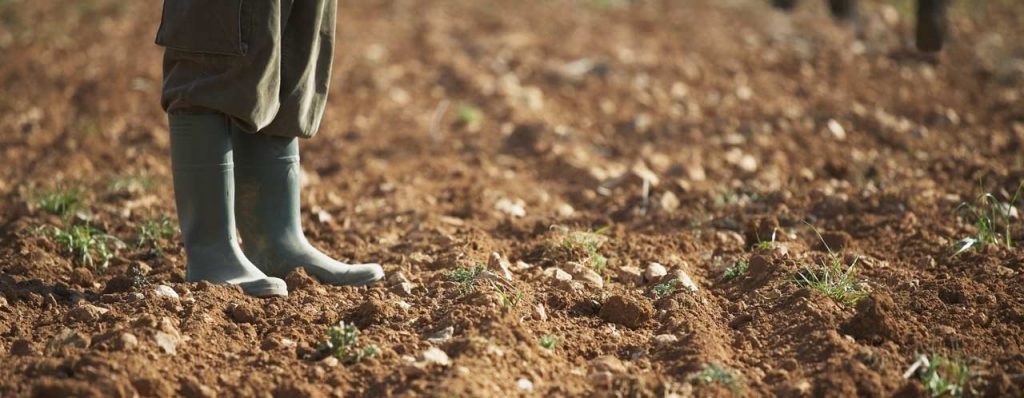
There is no doubt about it good mulch can make A LOT of difference to your yard and your soil.
But how do you know it is good mulch?
Check out our guide on how to pick the best mulch for landscaping and how it can reinvigorate your garden.
Put simply:
Mulching is the act of covering the top surface of the soil with a layer of either organic or inorganic material (mulch) to create favorable conditions for the growth of planted crops.
Believe it or not:
It is an agricultural technique that has been practiced for centuries to boost the yield from cultivated crops.
Benefits of Mulching
There are several ways through which mulching is beneficial to plants and these include:
1. Preserving the soil’s moisture content
Water is vital for the germination and growth of plants. Water nevertheless tends to evaporate very fast from the top soil layer especially in hot climates. This makes constant watering necessary to keep plants from wilting.
But I am sure you know that.
Covering soil in a layer of mulch ensures most of the soil’s moisture is retained even when the temperature rises. The mulch does this by shielding the soil’s surface from the heat of the sun which results in a lower rate of evaporation.
2. Warding off invasive weeds
Anyone who has had to deal with garden weeds knows that they are very destructive and hard to wipe out once they start growing – right?
You can say that again!
Surrounding any plant you grow with a layer of mulch will create conditions that are unfavorable for weeds to germinate without having to use toxic herbicides.
3. Enriching the soil with additional nutrients
When organic mulch undergoes decomposition, it releases nutritional compounds into the soil which get absorbed by growing plants to promote their growth.
Types of Mulch
Mulching can be done with several accessible materials of both organic and inorganic origin.
Organic mulches are suitable for temporary applications since they tend to decompose much faster than inorganic mulches. Organic mulches can also fertilize the soil as they undergo decomposition.
Inorganic mulches are mostly used in farms where large scale farming is practiced.

Types Of Organic Mulch
1. Dry leaves
Most trees grown on home lawns and gardens are deciduous which means they shed plenty of leaves during certain seasons.
Such leaves can be used during winter to protect plants from freezing temperature and during summer to reduce loss of moisture due to excessive heat.
But remember:
The leaves used in mulching have to be shredded first before application. It is also advisable to wait till the leaves are dry to make them easier to shred.
You can check out my guide to the best leaf mulchers on the market if you decide to go down this route.
2. Grass clippings
Grass clippings are the most easily accessible mulching material for anyone who has a lawn since they can be collected every time the lawn is mowed. So they are the favored material for creating mulch for home lawns and gardens.
There is no doubt about that.
The added advantage of using grass clippings for mulching is that the clippings also supply vital nutrients to the soil as they decompose.
3. Sawdust and wood chippings
Wood chippings from felled trees and saw dust can also provide excellent mulching material.
Wood chippings also tend to be denser than leaves and grass clippings which makes them resistant to erosion by wind and light rain.
But:
The main drawback of using wood chippings as mulch is that you have to carefully measure the amount you use.
Using excess wood chippings can cause the mulch to compact over time causing the soil below it to dry up. Sawdust can also contain traces of toxic pesticides which can leech into the soil.
Types Of Inorganic Mulch
1. Pumice rocks or gravel
Small pieces of rock or gravel can be placed around plants to act as inorganic mulch.
This type of mulch is mostly used in backyard gardens and flower beds to improve the aesthetics and provide a path for walking around the plants.
However:
Rocks and gravel add no nutritional value to the soil which makes this type of mulch unsuitable for cultivation of food crops.
2. Newspaper or cardboard
Newspaper sheets and pieces of cardboard can be used as mulch when planting crops on home gardens.
The sheets are spread on the ground to prevent weeds from growing. Holes can then be made on the sheets to sow seeds for whatever crop you want to grow. The seeds will germinate through these holes.
Pretty nifty eh?
The newspaper or cardboard will eventually disintegrate over time so you won’t have to remove them after your crops germinate.
3. Polythene sheets
Polythene and other plastic composites can also be used as mulch especially in large scale crop plantations.
Polythene sheets are not only excellent in retaining moisture, they also trap heat in the top soil and the resulting warm conditions promote rapid growth of plants.
It isn’t all sunshine and roses though.
The downside of using polythene sheets is that they can cause a lot of pollution when the sheets break down into smaller pieces. It is also not possible to use polythene when mulching grass lawns.

Choosing The Best Material For Mulching
All materials used for mulching have their advantages and disadvantages and not all can be used on gardens and lawns.
When selecting the best kind of material for mulching, there are a couple of factors that you will have to consider. These factors are:
1. What you intend to achieve
Mulching can be done with the aim of preserving moisture and heat, providing additional nutrients to the soil or to prevent weeds from growing.
All types of mulch have their strengths and the one you choose to use has to be able to bring about the desired effect.
For instance:
Mulching using pumice rocks for example will effectively take care of any weed menace in your garden. These rocks will however add no nutrients to the soil and if you require a mulch that also fertilizes the soil then you will have to look for an alternative.
2. The kind of crops you want to mulch
The appropriate type of mulch will vary depending on the plants you have.
For example, while polythene sheets can be used to mulch garden crops, they cannot be used on grass lawns as they will end up suffocating the grass.
How To Mulch A Garden Or A Lawn
There are several methods and materials that can be used in mulching. This article however will describe how you can use grass clippings to mulch your lawn or garden.
And there is one big reason for this:
Simply grass clippings are the most easily accessible mulching materials for most home owners.
Grass clippings also provide more or less all the benefits one would wish for when trying to create the perfect mulch.
Collect The Cuttings
The first thing you will need to do is collect fresh grass cuttings. Most modern lawnmowers are equipped with a collecting bag which gathers loose grass clippings as the lawn is mowed.
Don’t worry though.
If your mower lacks such a provision, you will have to use a garden rake to collect fresh grass clippings immediately after you have mowed your lawn.
Let The Cuttings Dry
Fresh grass clippings are usually wet and they should never be used as mulch while in this damp state.
The clippings should be left to dry in an open area and this can take between two to five days depending on the weather conditions.
Apply Fertilizer
Before using the grass clippings, you will need to apply a little nitrogen fertilizer over the lawn or garden where the mulch will be spread.
Let me explain.
This is because grass clippings drain nitrogen from the soil as they decompose and this could cause yellowing of plants surrounded by the mulch.
Once the grass clippings have finally dried out, you can proceed to use them to mulch your garden or lawn.
Mulch!
When mulching a grass lawn, you will only need to spread a little amount of clippings over the ground surface.
The layer of clippings should not rise past an inch in depth as it may end up forming a dense carpet over the lawn which is impervious to water or air.
And you don’t want that!
When mulching garden crops, you can use more grass clippings to create a layer of mulch which rises up to 3 inches from the ground.
To achieve the best results, apply the mulch when the soil is still wet and spread the grass on the aisles between lines of vegetables or flowers.
And one last tip:
If the plants are not arranged in a linear pattern you can spread the clippings around individual plants up to a height of 3 inches.

Common Challenges Faced When Mulching
Mulching can sometimes fail to produce the desired outcome or even end up in total disaster. Here are some of the common problems and how you can avoid them:
1. Fungal and bacterial plant diseases
Using too much mulch can reduce the amount of oxygen reaching the top layer of the soil.
This oxygen-deficient environment promotes the growth of anaerobic fungi and bacteria which can cause rotting of the plant’s roots and stem.
2. Yellowing of leaves
This is sometimes experienced when using organic mulch.
As organic mulching material decomposes, it alters the chemical composition of the soil which can result in depletion of naturally-occurring nitrogen in the soil.
What does this mean?
Nitrogen-deficiency is most common cause of yellowing leaves and this can easily be treated by addition of nitrogen-rich fertilizer into the soil.
3. Pests
It is not uncommon to find a few small animals such as slugs, rodents and spiders living inside the mulch you have recently laid.
These pests can start feeding on the plants you are trying to grow and destroy the results of all your hard work.
I am sure you will agree:
The presence of pests in your garden or lawn can also create an eyesore. No one wants to see rodents dashing across their neatly manicured lawn or garden.
To avoid having to deal with such, you should avoid piling mulch to a depth of over 3 inches. Thick layers of mulch provide a safe environment for all sorts of small creatures to live.
4. Withering plants
Mulching is often done to preserve the soil’s moisture content and ensure the plant doesn’t dry up.
There are some unusual cases when the mulch does the exact opposite and instead ends up causing the plants to wither and dry up.
It is unusual, but:
This mostly happens when using grass clippings and wood shavings which sometimes create tightly compacted mulch that is impervious to water causing the roots to dry up.
To prevent this, avoid using excessive wood shavings or grass clippings that pile to a depth of over 3 inches.
USEFUL RESOURCES
Want to learn more about mulching? You can find further information here:


I feel kind of dumb right now but I had no idea you could mulch the material found in your yard with one of these leaf mulchers.
I was searching for ways to not have to beat up the truck of my vehicle with bagged mulch like I have every year for the past several years and… while I wasn’t expecting this solution it certainly works!
I can’t imagine mulching leaves would give you the red or black type of mulch that I commonly use, is it possible to make that type of mulch at home as well?
Thanks! Yes it is amazing what you can do with your yard waste – it will certainly be more beneficial to mulch it!
I think the color of the mulch is not so important as the mulch itself. Get yourself a good mulcher or chipper shredder and it will get a some nutritious output that will be good for your soil and your plants.
I couldn’t have read your article at a better time as my lawn service was here today mowing , just need to mulch some tomato and green bean plants that I am trying to grow on my patio / porch . They are growing tall but no vegetables at yet , I will try and dry out some grass clippings and see if it gives them the edge they need . Thanks for sharing your knowledge .
So glad I could help Terri! There is more to mulching than meets the eye. Good luck with your mulching efforts, let me know how you get on and any other questions just shout.
Steve